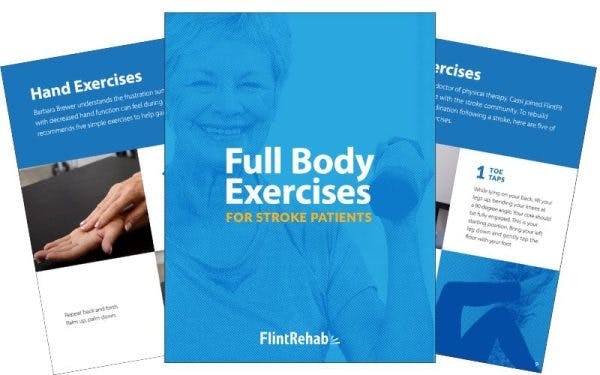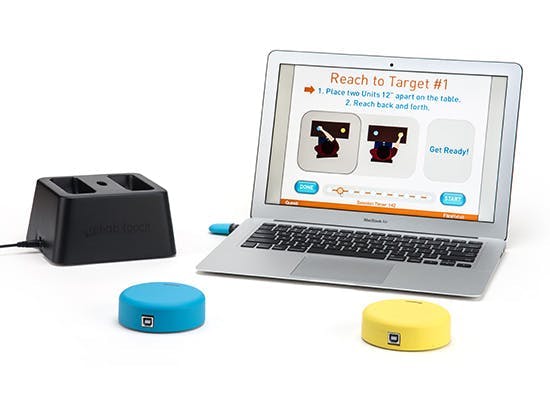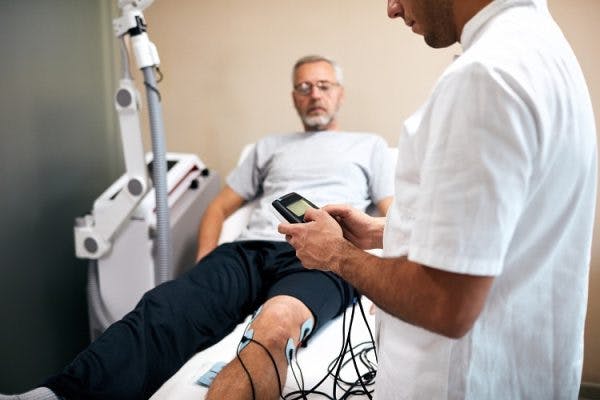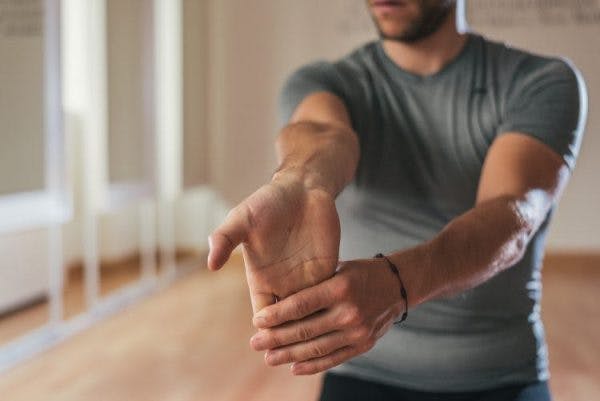Recovering from a stroke is a journey that often requires consistent, long-term rehabilitation. And whether it’s physical therapy, speech therapy, or occupational therapy, repetition is the key to rehabilitation. But even the most well-designed rehab program won’t work if survivors can’t stick to it. That’s where adherence or the degree to which you stay consistent with your prescribed rehab plan becomes important.
Adherence is often one of the biggest challenges in stroke recovery. Fortunately though, there are practical, evidence-based strategies that can help. In this article, we’ll explore 9 proven approaches to improve stroke rehab adherence and make the process more manageable—plus sometimes it might even make it more enjoyable.
Why Rehab Adherence Matters After Stroke
When the brain is deprived of oxygen and necessary nutrients, as occurs during a stroke, the affected brain tissue becomes damaged. Rehab is designed to help retrain the brain through neuroplasticity—the brain’s ability to rewire itself. This allows healthy areas of the brain to assume control over functions previously housed in damaged areas. Consistent practice is vital to activating neuroplasticity – more practice promotes greater potential for improvement.
Strong rehab adherence is linked to:
- Improved movement, cognition and communication
- Greater independence in daily life
- Reduced risk of complications
- Better overall quality of life
That’s why building habits and routines that encourage rehab participation is a critical part of the recovery process. Let’s take a look at some best, proven ways to increase stroke rehab adherence.
1. Leverage Gamification and Enjoyable Activities
Oftentimes, rehab can feel repetitive and tiring—especially when motivation is low. That’s where gamification comes in. Turning rehab into a fun or rewarding experience can improve engagement and help survivors stay consistent over time.
Why It Works
Gamification uses elements like points, levels, progress bars, and streaks to make an activity more engaging. These simple tools can make therapy feel less like a chore and more like a challenge or accomplishment. In other words, it makes it more fun.
Examples of Gamified Rehab Tools
- Interactive rehab tools. Devices like Flint Rehab’s MusicGlove and FitMi combine functional movement with music, rhythm, and real-time feedback, making therapy more engaging.
- Progress tracking apps. Some rehab programs include visual dashboards that reward consistency and mark progress over time.
- Personal challenges. Set daily or weekly goals—like “complete 5 rounds of hand exercises” or “beat yesterday’s time walking 20 feet.”
By introducing a bit of play into rehab, survivors may find it easier to stick with their routine, especially on difficult days.
2. Set Personalized and Achievable Goals
“Setting goals is the first step in turning the invisible into the visible.” — Tony Robbins
Goals are an important part of staying motivated. They help you understand where you are going and how you are progressing in real time. Simply put, they help act as a measuring stick. Yet generic or unrealistic goals can be discouraging. That’s why it’s important to personalize rehab plans based on the survivor’s unique abilities, preferences, and circumstances.
How to Set Meaningful Goals
- Make them specific and measurable. For example: “Stand independently for 10 seconds” or “Practice speech drills for 5 minutes.”
- Tie goals to personal values. Rehab becomes more motivating when it helps someone return to a favorite hobby or task, like cooking or gardening.
- Break big goals into small wins. Short-term goals build confidence and create a sense of momentum. Furthermore, focusing on completing goals in a specific timeframe can help you stay on track and provides the opportunity to re-evaluate progress periodically.
When goals feel achievable and relevant, survivors are more likely to stay committed over time.
3. Use Reminders and Routines
Life after a stroke can be unpredictable, and rehab often takes a backseat when routines aren’t clearly defined. Using reminders and routines can be the nudge you need to stick with your rehab, even on the days where you might not feel like it. In addition, building daily structure around rehab can help turn practice into habit.
Tips for Consistency
- Tie therapy to existing habits. For instance, try stretching after a shower (your muscles may already be more relaxed after a warm shower) or walking exercises after lunch.
- Use visual prompts. Leave rehab tools in plain sight as reminders.
- Set digital alerts. Calendar apps, alarms, or daily checklists can prompt action at specific times.
Over time, these routines reduce the effort needed to remember—and make rehab a more natural part of the day.
4. Involve Caregivers and Family
Involving loved ones may feel uncomfortable at times. But the fact is, recovery doesn’t happen in isolation. When caregivers, partners, or loved ones are part of the process, adherence often improves.
Ways Family Can Support Rehab
- Provide encouragement. Small affirmations and words of support help keep spirits high.
- Join in. Participating in exercises together can make rehab feel less isolating.
- Manage logistics. Help with transportation, setting up equipment, or communicating with therapists makes the process smoother.
- Accountability: Having a trusted loved one to remind you and keep you on track on your bad days can help you stay consistent.
Involve your caregivers, family, or even friends in your recovery. It can help reinforce consistency and build a sense of shared commitment to your rehabilitation.
5. Provide Education and Clear Expectations
A lack of understanding is a common reason people fall off their rehab routine. Educating stroke survivors and their caregivers about how and why rehab works builds trust and motivation.
What to Clarify
- The purpose of exercises. Knowing what a movement is improving helps reinforce its value.
- What realistic progress looks like. Recovery often includes plateaus and slow gains, as well as occasional setbacks. Knowing this helps set accurate expectations.
- The benefits of long-term participation. Rehab doesn’t just improve physical and cognitive function—it helps restore independence and quality of life.
Find quality resources to educate yourself on recovery (subscribe to Flint Rehab’s weekly recovery newsletter). A well-informed survivor is an empowered one, more likely to stay engaged for the long haul. If you are uncertain why certain exercises are recommended, ask your therapist to provide further clarification.
6. Break Down Barriers to Access
Removing friction is an important piece of sticking to rehab. For in person therapy sessions, barriers like transportation, cost, or lack of time can prevent people from fully participating in rehab.
Reducing Friction and Improving Access
- Use telehealth. Virtual therapy makes rehab possible without leaving home.
- Choose home-based tools. Programs or exercises you can do at home and outside a traditional therapy session like FitMi or guided video exercises can help keep you on track.
- Explore financial options. Nonprofits, insurance programs, or grants may help reduce out-of-pocket costs for therapy sessions or devices.
Figure out ways to eliminate as much friction or barriers to access as possible in order to make it easy to stay on track.
7. Track Progress Visually
Humans are visual creatures. Seeing improvement—not just feeling it—can help survivors stay motivated, especially during slower stages of recovery. It can also be a great way to benchmark yourself and adjust your routine as needed.
Ways to Make Progress Visible
- Charts and graphs. Plot improvements in walking distance, speech clarity, or exercise reps. Even just keeping a journal of improvements can be motivating.
- Before-and-after videos. Recording movement or speech sessions helps highlight subtle gains.
- Checklists. Daily task lists can create a sense of accomplishment and accountability.
Visualizing progress helps reinforce the value of effort and can be a powerful motivator over time.
8. Celebrate Milestones
Rehab is full of moments worth celebrating, whether it’s standing independently, completing an entire speech session, or just sticking with the routine for a full week. And celebrating these wins, both the small and big ones, can help keep you motivated and excited to continue improving.
Ideas for Recognition
- Mark milestones. Write them on a calendar or journal to look back on.
- Share victories. Celebrate with friends, family, or online stroke recovery communities.
- Create rewards. A favorite snack, a relaxing activity, or a sticker chart can help reinforce effort.
Use these opportunities as a reminder of how far you’ve come and that you have the ability to keep improving with consistency in your rehab.
9. Build a Support Network
Emotional support is just as important as physical progress. Beyond just your family and caregivers, connecting with others like professionals, other survivors, and more can help create accountability and motivation — both of which are needed to stay consistent over the long haul.
Where to Find Support
- Join a stroke recovery group. Online or local meetups provide connection, shared experience, and encouragement.
- Stay in touch with therapists. Regular check-ins keep recovery plans fresh and personalized.
- Lean on friends or neighbors. Even casual support can make a difference, like walking together or checking in after appointments.
The more supported you feel, the more resilient and motivated you’ll be to keep showing up for your recovery—day after day.
Adherence and Consistency Lead to Recovery
Stroke rehab requires more than just effort—it requires consistency. And consistency depends on finding strategies that work in real life, for real people. Use these simple tips to stay motivated and consistent with your rehab program.
Remember, every stroke survivor’s path is different, but the need for steady, ongoing rehab is universal. With the right support and strategies in place, survivors can make meaningful progress—day by day, step by step.









